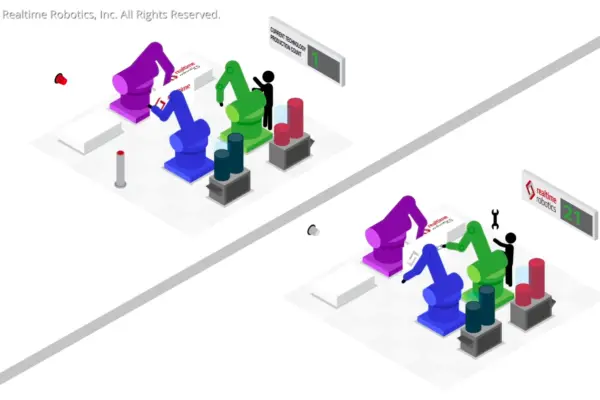
Tech updates
Easy and Unobtrusive Failure Recovery
Unfortunately, robots don’t run smoothly all the time. Robot hardware or software could fail, an end-effector could break, or even some part of the workspace itself could fail (e.g., a conveyor belt providing materials to one of the robots). Failures cause a disproportionate amount of downtime.
To get back up and running, the operator must perform the following steps:
- First, the workstation must immediately cease activity to not cause further damage.
- The operator must manually reset every robot to its “home’ position.
- Remove any materials that had been incompletely processed at the time of stoppage.
- Perform the desired repair(s).
- Leave the workstation and restart the software that controls the workspace.
- Resume operations.
This is a long process that involves a significant amount of manual effort and impacts performance of the entire workspace. It is not possible to, say, replace the end effector of a robot and offload its work to another robot during this repair.
With technology from Realtime Robotics, failure recovery is fast, simple, and flexible. The operator enters the workspace and can decide whether or not to have the robots automatically return to their home positions. While the operator is performing the desired repair, the unaffected robots can continue to work, and there is no need to discard any in-progress work. Realtime’s technology also allows easy reassignment of tasks from an under-repair robot to other robots.
Get in touch to learn more about how we can help your robotic workstations.